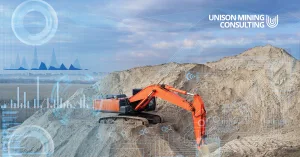One of the biggest challenges of preventive maintenance routine scheduling for mining equipment is balancing the need for timely inspection intervals without disrupting mining operations unnecessarily.
While a preventative maintenance approach that leverages data analytics can save companies substantially in the long run, there are initial challenges in optimizing PM routines for effectiveness. These can include data quality and accuracy, managing the complexity of a large asset portfolio, and overcoming resistance to change and adoption by employees and various stakeholders.
5 considerations for preventive maintenance routine scheduling
Asset Performance Data for a Predictive Maintenance Approach
The performance data collected from equipment sensors will inform all preventative maintenance strategies for your mine. By monitoring various parameters such as the temperature, vibration, fluid and pressure levels, deviations from normal operating conditions can be identified.
Once pre-defined parameter thresholds are exceeded, an alert can be triggered to prompt a preventive maintenance inspection well before equipment breaks down.
Equipment Criticality and Remaining Useful Life
Assessing the Remaining Useful Life (RUL) of equipment enables maintenance to be scheduled at optimal intervals, maximizing equipment usage and longevity while minimizing downtime.
By developing PM routines based on actual equipment conditions at any point in time, costs can be mitigated by scheduling maintenance when most needed to preserve equipment but also reduce unnecessary maintenance.
Resource Availability and Workforce Planning
Another consideration for PM scheduling is the resources available, such as technicians available and workforce planning. Coordination with HR departments is crucial to ensure that PM routines are designed in line with workforce capacity. This can be achieved through a workforce capacity planning system and clear communication between departments.
Seasonal and Environmental Factors
Some equipment may be used more intensively during certain seasons or with unpredictable weather changes. Additionally, in dry or dusty environments, airborne particles can accumulate in machinery, leading to blockages, increased friction, and wear. In this case, regular cleaning and filter replacements are essential in such conditions.
Weather conditions can create safety risks, such as slippery surfaces or poor visibility. Maintenance routines should consider these factors by ensuring that safety features like lights, brakes, and emergency systems are always operational. With the use of predictive analytics using sensor equipment, PM routine scheduling can be optimized over time to include these factors the more equipment data is collected.
Compliance with Regulatory Standards
Operations in sensitive environments may require compliance with environmental regulations, such as controlling emissions during engine cold starts. Equipment maintenance routines should include checks to ensure compliance with these regulations.
To ensure a preventative maintenance approach is based on accurate data for strategic decision-making, communication systems, employee buy-in and training are crucial. Unison Mining can support your team’s transition to a more proactive approach to maintenance, reducing unexpected repair costs and ensuring the longevity of your equipment.


















